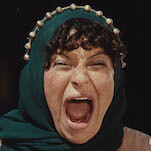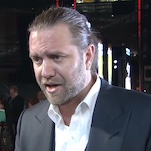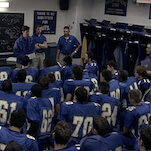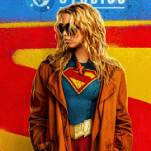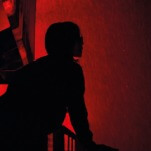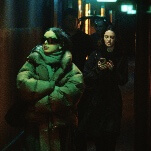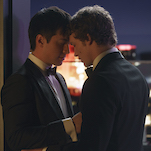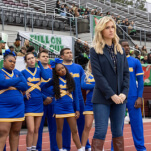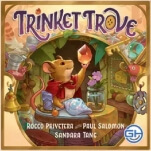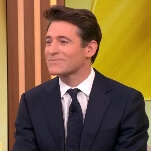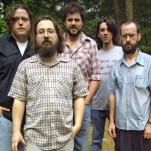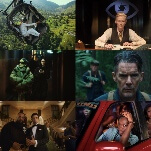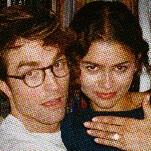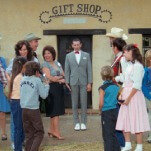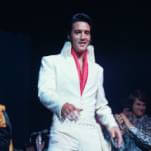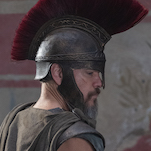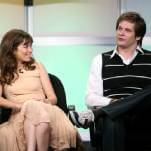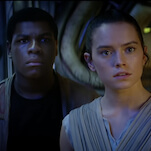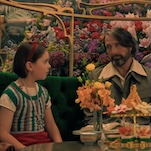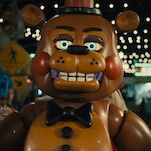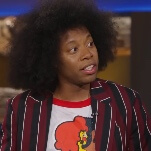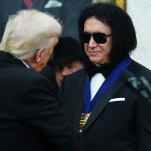Stephen King's literary rock band remains a top-shelf celebrity side project
The Rock Bottom Remainders, a musical troupe of bestselling authors, has been the gold standard for vanity projects by totally eschewing vanity.
Photo: Jerod Harris/WireImage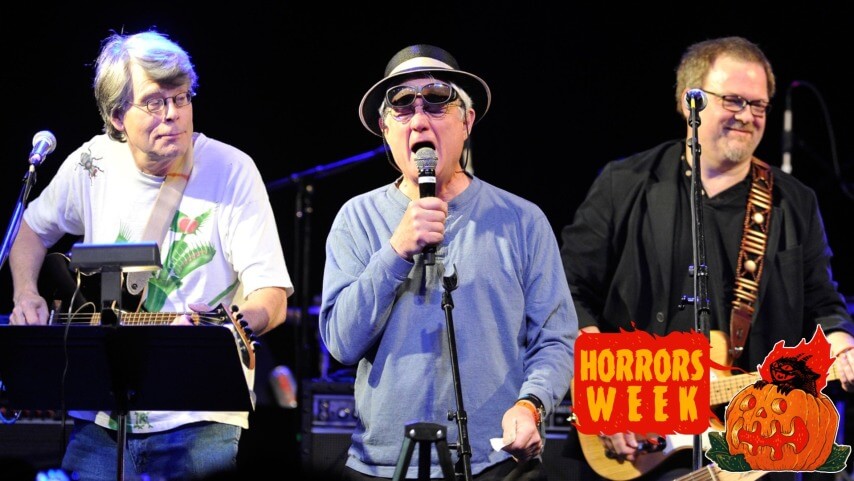
In the grand scheme of celebrity rock bands—a subtype that includes Johnny Depp’s Hollywood Vampires, Jared Leto’s Thirty Seconds To Mars, and New York Knicks owner James Dolan’s JD & The Straight Shot—the Rock Bottom Remainders might not be the most well-known. Or the sexiest. Or even the most skilled. But at least they know an unclear antecedent when they see one. For the last 35 years, Stephen King’s literary rock band has been the gold standard for celebrity side projects, neither outstaying their welcome nor pretending to be cooler than a band of bestselling authors could ever be. Self-deprecation and sincerity make strange bandmates, but at a time when transparent celebrity attempts at authenticity dominate our timelines and cynicism is ascendant, the Rock Bottom Remainders remain an ideal example of how someone who’s already on top should spend their free time.
The Rock Bottom Remainders are a charity supergroup of genre-spanning writers, and they are very much musicians second. But what they lack in musical ability, they make up for in enthusiasm. Since first gigging together to rock the 1992 Anaheim Booksellers convention, the Remainders’ numbers have expanded and contracted, with the lineup at times featuring Stephen King, Amy Tan, Dave Barry, Mitch Albom, Scott Turow, Ridley Pearson, Mary Karr, Matt Groening, and Alan Zweibel, to name a few. Over the last three decades, they raised more than $3 million for literary and First Amendment-related causes. Moreover, the project got a group of stuffy yet successful scribes away from their desks and onto the stage, pushing them to make fools of themselves as they strive for mediocrity.
The Rock Bottom Remainders were founded by “honky tonk sweetheart” and amateur country singer Kathi Kamen Goldmark via fax machine in 1991, according to the band’s 1993 essay collection Mid-Life Confidential: The Rock Bottom Remainders Tour America With Three Chords And An Attitude. (One of the benefits of a band of authors is that they have no trouble writing their own story.) Goldmark knew authors. It was a side effect of her day job, acting as a liaison for writers on book tours, driving them around San Francisco as they peddled their words and taking them to bars to decompress afterwards. Goldmark, a self-described “professional codependent,” would often find herself becoming an “exhausted author’s best pal for a day.”
“It’s an artificial intimacy, but every once in a while, some spark cuts through the book tour routine, and ‘my’ author and I become friends,” Kamen explained. One night, after witnessing humorist Roy Blount Jr. take a couple shots of bourbon and hop on stage for a rendition of Rockin’ Sidney’s jaunty hit, “Don’t Mess With My Toot Toot,” a lightbulb lit up. Over the years, Goldmark kept note of which authors she “believed to be musical” and fired off faxes to Amy Tan, Toni Morrison, Maya Angelou, Ridley Pearson, Barbara Kingsolver, and more. “An invitation to join the Remainders was partly a way to say thank you to some of these people,” she wrote. Not all of them joined. Angelou, for example, was only ever an honorary member. Tan responded first, suggesting everyone wear wetsuits and flippers on stage. Even before their first practice, the band’s goofiness was its fifth (or 16th) Beatle.
The original Rock Bottom Remainders lineup featured Goldmark, Barry, King, Blount, Tan, Pearson, Kingsolver, Groening, Tad Bartimus, Robert Fulghum, Dave Marsh, Greil Marcus, and Joel Selvin. They broke the band into sections, with backup singers Bartimus, Goldmark, and Tan becoming “Remainderettes,” and the rock critics (Marcus, Marsh, and Selvin) and ex-rock critics (Groening) making up the “Critics Corner.” Selvin reached out to studio virtuoso Al Kooper—whose Super Session album basically invented the rock supergroup, and who was immortalized in A Complete Unknown as the organist who snuck onto “Like A Rolling Stone”—to be their musical director. He did his best. Armed with a setlist of rock ‘n’ roll classics, like “Midnight Hour,” “Leader Of The Pack,” and the Stephen King-crooned closer, “Teen Angel,” the band was ready to rock.
Pulling their name from industry lingo for unsold books destined for the dollar bin, the Remainders operated under a similar ethos. The clearance rack is the great equalizer, where all books eventually end up, so the band’s members, too, shed themselves of self-aggrandizement and ego. Sure, there were still clear delineations, fame-wise, among the members. Some authors had fans accosting them at gas stations at 3 A.M.; others required more googling than security. “I was coming into this as the weenie,” Ridley Pearson told The A.V. Club over Zoom. “I’d had a couple of bestsellers, but I was nowhere near in this league. This was the magic of Kathi; she recruited players. When people left, we added people who don’t have that superstar ego. It’s never there when the Remainders are there. We have our tiffs, but nobody ever pulls the ‘I’m so famous’ kind of thing. You just never feel it. Everybody’s equal.”


